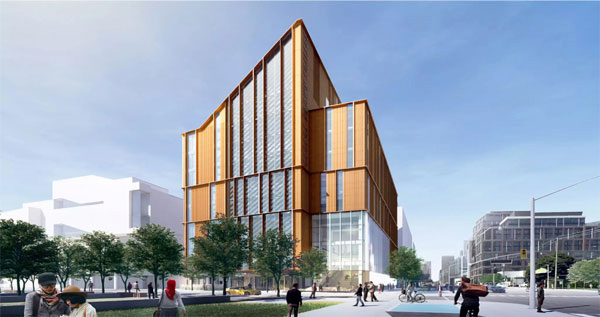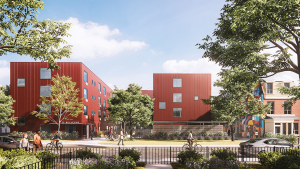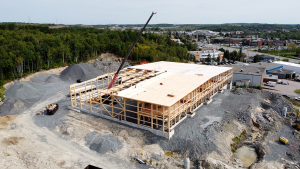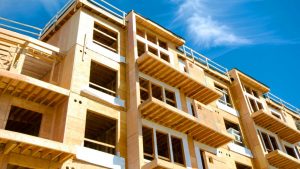Mass timber (MT) is seen by many as an answer to construction’s embodied carbon problem. It is suggested using manufactured wooden components in place of concrete or steel could reduce a large chunk of the industry’s estimated 11 per cent contribution to global GHGs. Yet, progress is far from straight-forward.
The 2023 Mass Timber Construction Report compiles statistics from portfolios of architects, engineers and builders that shed light on the state of the industry and its challenges. One challenge concerns perceptions of MTC cost premiums.
“There is a premium for a mass timber project, up to 15 per cent,” the 264-page report admits. “But median project premium was less than two per cent, and the gap continues to shrink as teams and markets become more experienced.”
Offsetting the premiums are savings gained through scheduling efficiencies. For example, the report says prefabrication of MT components can benefit from scheduling savings of up to 25 per cent for the superstructure through improved co-ordination, and by a 50 to 70 per cent reduction in workforce numbers needed for structural framing.
Exposed MT surfaces offer other potential savings, such as reduced dry wall and mechanical components left uncovered. However, most building regulations require fire protective encapsulation over certain heights, which can negate those savings.

Despite this, the growing interest in ever-higher MT buildings is reflected by the high profile given to new project announcements around the world. Not only are these tall but also very diverse in purposes.
Europe’s tallest MT building, Mjøstårnet , in Brumunddal, Norway rises 18 floors, comprising office spaces, residential units and a 72-room hotel.
Slightly shorter is HoHo Vienna at 84 metres, situated in the northeast of the Austrian capital. It combines a diverse array of amenities, including a hotel, apartments, restaurant, a wellness centre and offices.
Yet these are dwarfed by plans for Tokyo, Japan. If they proceed, a 350-metre-tall MT skyscraper will be completed by 2041. Research and development is currently underway under the project name W350.
Yet Aarni Heiskanen , managing partner AE Partners in Finland, suggests not all countries are experiencing the same level of interest in tall and voluminous MT structures.
He references Petri Heino, director of the national wood building program at Finland’s Ministry of Environment. Heino points to ingrained practices in Finland that have restricted MT growth, including perceptions that wood is strictly for single-family homes
Heiskanen says this has created a chicken-and-egg problem in Finland, despite being a country dominated by forests.
“There’s no demand because there’s no supply, and vice versa,” he writes. “That leads to higher prices than concrete construction since cost-efficiency is hard to achieve with small batches.”
While Heiskanen writes of MT challenges in his home country, New York City is among several jurisdictions around the world opening the door for larger and taller MT structures.
In September, the New York City Economic Development Corporation launched the New York City Mass Timber Studio with the intention of becoming a national Leader in the use of mass timber and other innovative building materials. The technical assistance program will support active MT development projects in the early phases of planning and design, with grants of $25,000 to selected teams to conduct design, technical and economic feasibility assessments for mass timber.
Growing MT interest in North America is reflected by numbers cited in the 2023 Mass Timber Construction Report.
North American consumption of MT components in 2019 was 280,000 cubic metres, increasing 30 per cent to 362,000 in 2022. Similarly, the number of MT projects in Canada and the U.S. increased by 17 per cent from 2021 to 2022.
Nevertheless, there is still a need for steel and concrete in MT buildings.
The 10-storey Limberlost Place at George Brown College’s Waterfront campus in Toronto is built from nearly 1,200 pieces of cross-laminated timber and 571 glue-laminated MT components. Yet it will also use 5,850 cubic metres of concrete and over 22,306 unique steel components.
John Bleasby is a Coldwater, Ont.-based freelance writer. Send comments and Inside Innovation column ideas to editor@dailycommercialnews.com.







Recent Comments